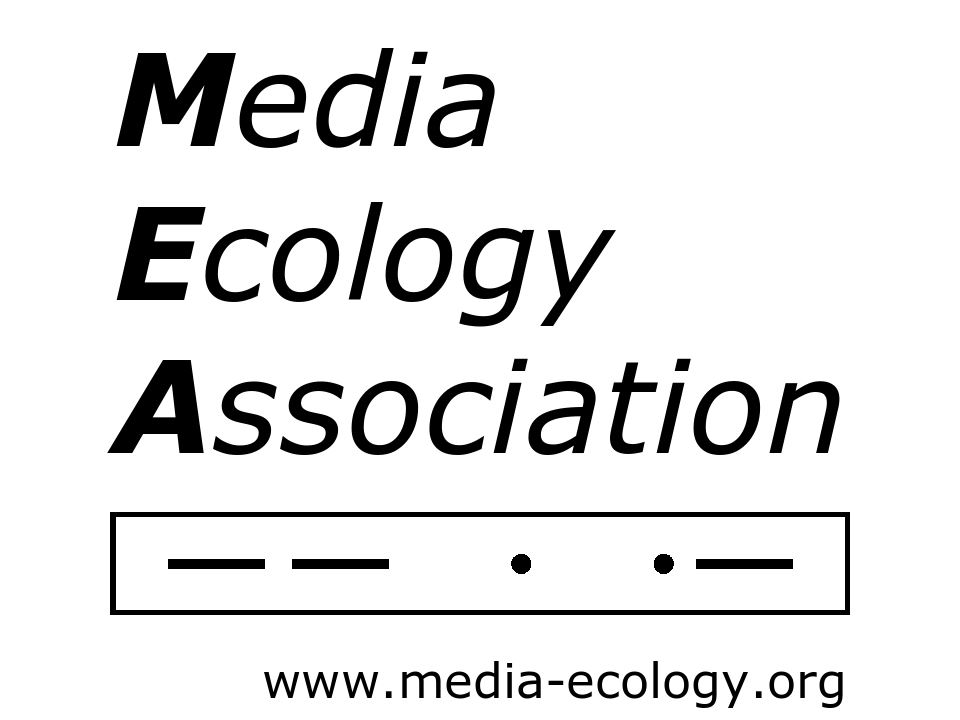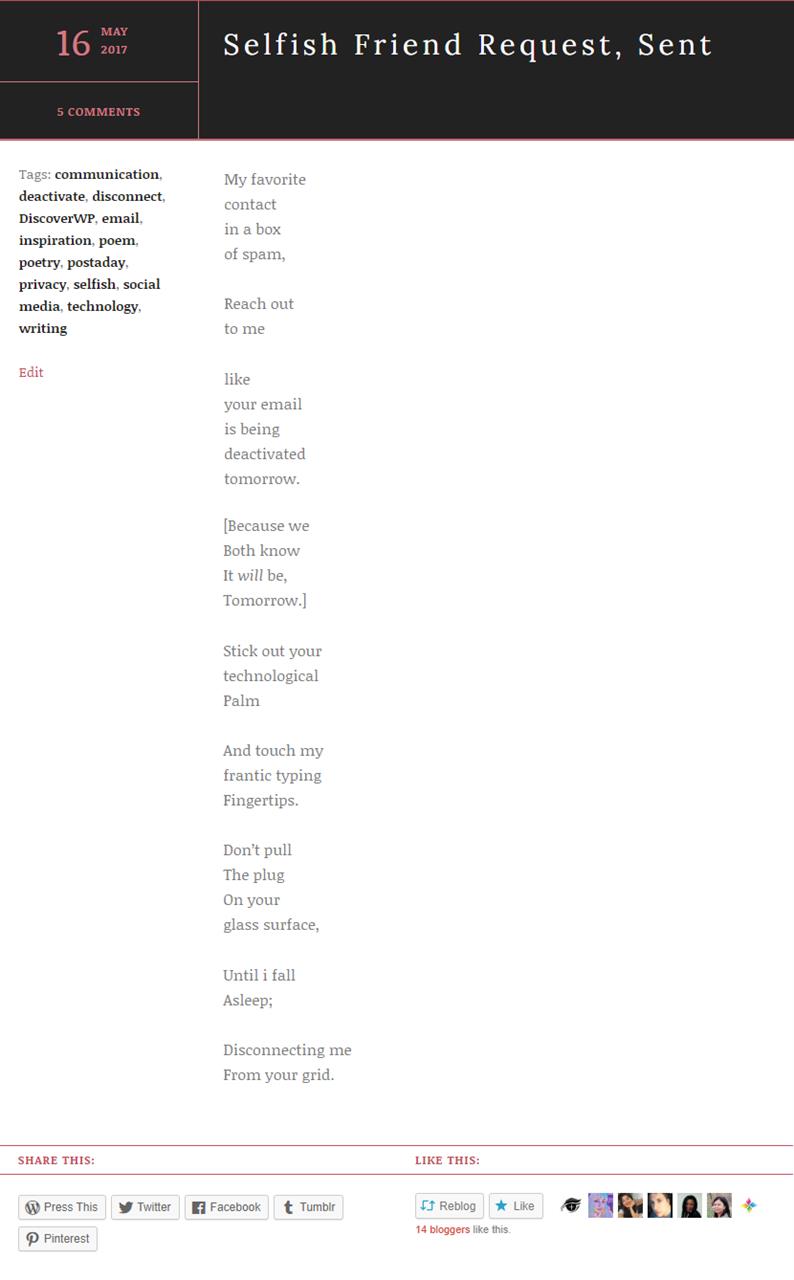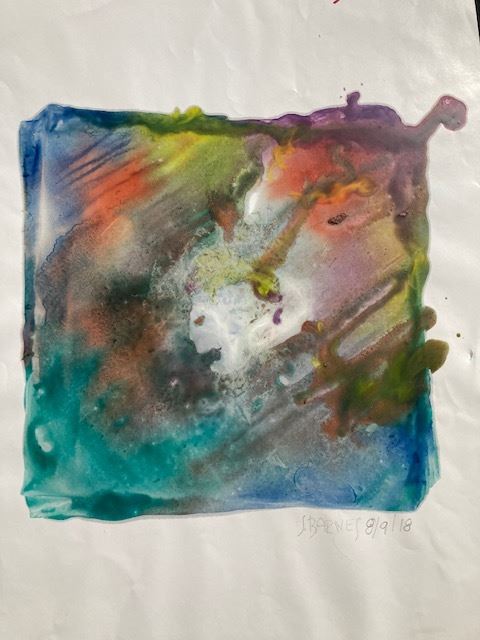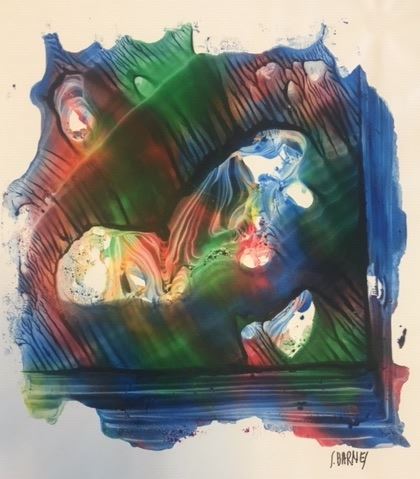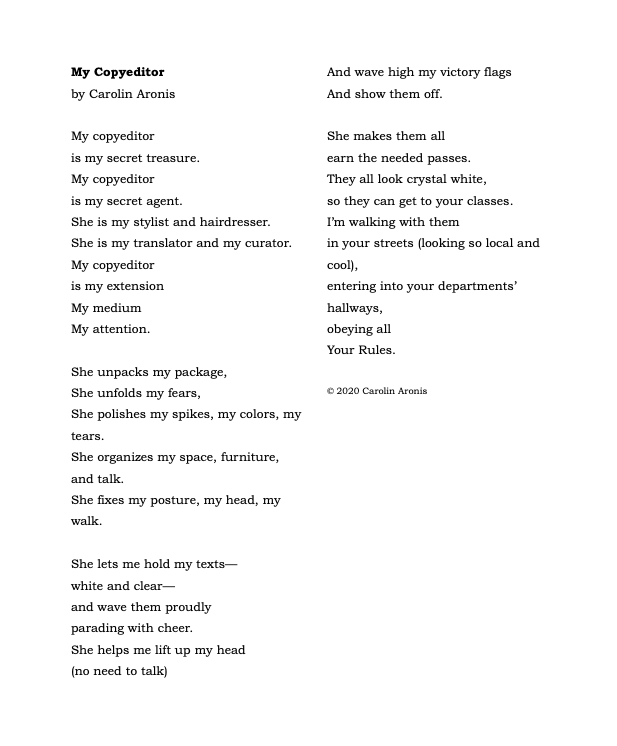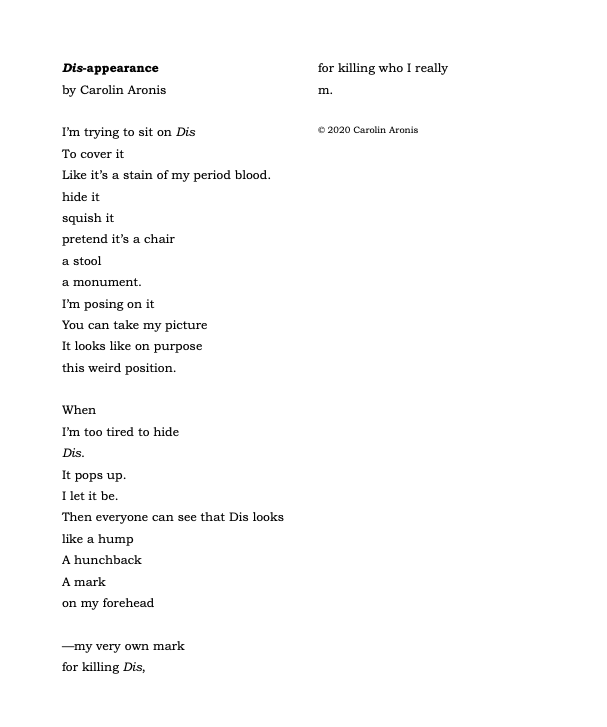WOMXN, LANGUAGE, TECHNOLOGY
Virtual Exhibit
2020 MEA Convention
Meet the artists behind this exhibit on Friday, June 19 from 10:00–11:15 AM in Room 4.
Viewers are also invited to reach out to the artists individually with comments and feedback via their email addresses below.
Artists retain copyright to their respective works.
Rationale/Introduction
This non-conventional session gives a unique opportunity to scholars and artists to express media ecology arguments in an alternative way than the common type conference presentations. From reflections on media methodologies and genres, to the explorations of technological relations to the body, love, and talk — this session assembles unique works of several MEA womxn members.1 Our works, from poetry to paintings, aim to discuss unscrutinized connections between womxn, language and technology. In what is presented below we challenge expectations of gender, masculine rationality, “White” talk, and the traditional division between private and public realms. We bring into discussion the corporeality of our forgotten body, (“white”) language we sometimes abide to and other times play with, and the infrastructure of technologies that we adopt, transform into, or use for touch. In our works we deal with practices of exclusion, survival, and maintenance in the current academic and non-academic worlds. We hope that this exhibit will develop some important discussions around these topics.
Organizer and Chair
Carolin Aronis
-
We use “womxn” instead of “women” to represent the complexity of gender which recognizes that we have diverse and different identities and roles which are not all defined by a relationship to “men” (or dictionaries). See also here: https://www.dailydot.com/irl/womyn/. ↩
1
Adeena Karasick: “Ærotomania” and “Dance of Desire”
Abstract
Two videos from Adeena Karasick that explore language as a transformational tool for new ways of meaning and being.
ÆROTOMANIA
the airplane is an extension of the body (Marshall McLuhan)
As both as a love letter and a lament to the airplane, Ærotomania investigates how the airplane is structured like a language. Through vispoetic fragmentation and layered language and image, it speaks to ways both individuals and meaning get transported to multiple and sometimes unexpected destinations; how, like language itself, the airplane becomes a symbol of hope, flying through a variety of zones, registers, soaring to higher and higher levels, leading to radically transformative possibilities of pleasure, power and promise.
Focusing on the airplane, as a technology, as not just an extension of the body — but specifically metonymic of the female body; flying through clouds of data, through a sultry and amorous mapping of light, “shade,” shadow, this poetry video highlights the relationship of how language, an ever-swirling palimpsest of spectral voices, textures, whispers and codes transporting us through passion, politics and pleasure as we negotiate loss and light; opening up new ways of seeing and being.
DANCE OF DESIRE
This poetry video from Karasick’s Salomé: Woman of Valor Spoken Word Opera not only focuses on how language shapes meaning (ironically playing on Herod’s attempt to shape action through his language), but through the use of collage, montage, multiple and often conflictual cultural references, in Korzybskian terms, it acts as a “time binder,” moving through erotics and spirituality, academia, religion and pop culture, exposing how language and culture are never pure but bleed into each other, and erupt as a palimpsestic web of both sacred and secular, acoustic and textual echopoeic space.
Exposing how the story of Salomé does not belong to any one lexicon but hyper-referentially draws on and borrows from a range of intertextual periods, currents, environments; a constative element of material social practice, it literally presents itself as a dancing manifestation of a McLuhan mosaic, a “hubub of sensation,” where through both medium, message, it avails the veil of the veil unveiling language and meaning as an intertextilic web of “abstraction.”
Bio
Dr. Adeena Karasick is a New York based Canadian poet, performer, cultural theorist and media artist and the author of ten books of poetry and poetics. She teaches Literature and Critical Theory for the Humanities and Media Studies Dept. at Pratt Institute, is Poetry Editor for Explorations in Media Ecology, 2018 Andrew W. Mellon Foundation Award recipient and winner of the 2016 Voce Donna Italia award for her contributions to feminist thinking and 2018 winner of the Albert Nelson Marquis Lifetime Achievement Award. The “Adeena Karasick Archive” is established at Special Collections, Simon Fraser University. Forthcoming is The Book of Luminations from Talonbooks, 2021.
Email: adeenakarasick@cs.com
2
Abstract
In 2017, when I wrote these three pieces in their pixelated form they happenstantially followed McLuhan’s playful use and misuse of the phonetic English language. All three pieces: “blogging”, “muting The echo”, and “Selfish Friend Request, Sent” contribute to media ecology a continued poetic exploration into how our blurry presences in physical and digital spaces engender our landscapes at varying degrees and levels of experience. Through the sites of blogging and codependency, I invoke the inherently insufficient and terminally playful qualities of language; both enabling and disabling our experiential accounts of proximity, relations, and visceral corporeality. Depending on which dimension readers interpretatively focus on while reading, their own unique personal frame will guide their translation. As my WordPress blog tagline states, and to put it plainly: “I spew all these words at you, releasing them from bonking around up in my noggin causing a ruckus.”
Bio
Bernadette Bowen is a PhD student in the School of Media and Communication at Bowling Green State University. Her interests intersect the broad fields of critical and feminist theories, with an eye towards the ideological struggle between institutions, gender, and media ecology.
Email: BBowenBGSU@gmail.com
Website: https://bowenbgsu.wixsite.com/babowenbgsu
3
Abstract
What does it mean to find solitude in an age of social media? Are we ever truly alone in this cyber age? Nowadays people can hideaway in isolation while having a crowd right in their fingertips. From a McLuhanesque perspective, social media is another extension of the human body. But how does the intangible touch of billions supplement true intimacy? Can connection lead to disconnection and vice versa? I will be presenting three works, each includes a poem and coinciding digital art. These written and visual pieces dissect the cognitive dissonance, both positive and negative, associated in the broadcasting of one’s identity (true, false, anonymous or otherwise) over virtual social platforms. They tell tales of distortion, love, resilience, “otherness”, and mental health all while navigating between the hyperreal and the cerebral. Although we are seemingly spiraling through reflections of human nature and fabricated illusions within cyberspace, this is an attempt to sift through the static.
Bio
Sara Falco is a poet and artist, specializing in the digital mediums of graphic design and photography. She is a student at Temple University majoring in Media Studies & Production and minoring in Gender & Sexuality. Her work is inspired from a diversity of illusions including expressionism, animation, intersectional feminism, street art, the cosmos, and other projections of stardust. Uranus Peregrine is the model/muse pictured in the graphic piece "Ms. Beehave". She has a BA in Psychology from Temple University Japan along with being a twitch affiliate and digital artist. Julian Vargas is a collaborating author on the poem “2 Hearts Transcend the Hive”; he has a BA in Theater Arts from Temple University and is a performance artist based in NYC.
Email: falcosara1@gmail.com
4
Abstract
The medium influences the content and what can be created and transmitted through it. For example, media corporations control the messages transmitted through broadcast television. The in case of the art, the intention of the artist influences the message received. Average people do not have access to the creation and dissemination of mass media. In contrast, everyone can generate artistic images. The message of art is more democratic than the message of television. However, television and art share an element of entertainment.
Media become messages because they directly shape the form of information and how it is understood. The medium is colored wax that is melted on a metal plate. Paper is placed over the plate to create an image. The melted wax takes on a form of it’s own. It freely flows on the page and forms shapes, blends colors, and creates images. The fluid nature of the wax makes the medium uncontrollable. As a result, the heated wax medium creates the message. The media create the content, which forms the message.
Understanding the message relies on the senses of the viewer. How does it make you feel? What images do you see? We perceive the messages through our eyes and how we relate to the meanings of the shapes, colors, and visual images emerging through the flowing wax.
Bio
Dr. Susan B. Barnes graduated from the Media Ecology Department and is a retired communication professor. She has written ten books and currently runs the Spirit Art Gallery in Cassadaga, New York.
Email: SusanBBarnes@gmail.com
Website: http://www.spiritartgallery.net
5
Abstract
Written earlier this year as part of a larger project on “white” language and discursive practices of academic disappearance, my poems seek to illuminate practices of exclusion and survival of scholars who do not speak the “right,” “white” language in American academe. I focus on scholars who are often academically dismissed for their style of talk, dialect, register, and/or accent: among others, scholars of color, women, first generation students, and/or non-Northern Americans.
The poems are unfolded as an invitation to (re)visit the poetic Other’s frustration, jealousy, survival modes, dismissal and disappearing positions in the academic realm. I emphasize the corporeality and materiality of talk as political media technological practices, which reflect material racism while allowing the presence of silenced voices, skins, body postures, etc. The first two poems, Disappearance and Disabled Voices (not included in this exhibit) describe a state of frustration and jealousy for being dismissed due to a language barrier. The latter poems, My Copyeditor and Dis-appearance (included above) show practices of survival and bravery.
I use an autoethnographic style to construct an intimate, personal, authentic voice for numerous silenced scholars and students whom I have learned their experiences.
Bio
Dr. Carolin Aronis is a Postdoctoral Scholar and a Visiting Lecturer of Communication at the University of Colorado Boulder, and the Internet Officer of the Media Ecology Association. Her work is situated at the intersection of media ecology, rhetoric/discourse, and identity politics and activism.
Email: Carolin.Aronis@colostate.edu
⮐ Return to the main convention page
© 1999–2023 Media Ecology Association
